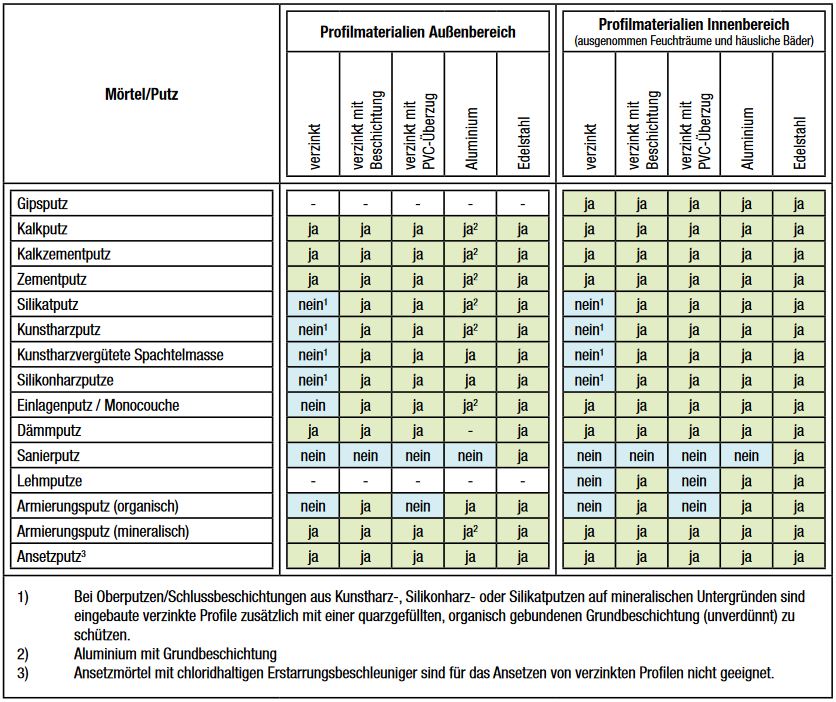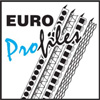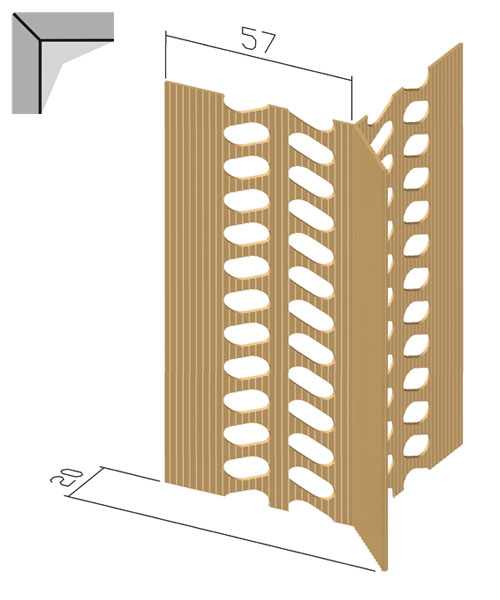Plaster profiles
High-quality plaster profiles for every application
Material legend
s.-galvanized sheet steel
- Item no.
1xxx / 5xxx
Aluminum
- Item no.
3xxx
- Rigid PVC
- Item no.
9xxx
Stainless steel
- Item no.
4xxx
polyester lacquer coated
- Item no.
2xxx / 8xxx
Interior plaster profiles
Exterior plaster profiles
Insulating plaster profiles
Profiles for the ETICS system
Wire straightening angle
Plastering strips
ETICS system
Ribbed expanded metal
Tools
Product information
Plaster profiles are used for precise plaster finishes in the area of edges, corners, joints and connections in interior and exterior areas and
ensure increased safety for the corresponding plaster system under mechanical loads.
Plaster profiles are plaster supports and
plaster reinforcements as defined in DIN EN 13658-1 and DIN EN 13658-2 and are made from the following materials:
- Sendzimir hot-dip galvanized slit strip with a two-sided zinc coating in the range of 275 to 350 g/m² in accordance with EN 10346,
optionally also with a polyester coating on both sides - Slit strip made of aluminum alloys in accordance with EN 485 and EN 573, optionally with polyester coating on both sides
- Slit strip made of stainless steel to EN 10088, material 1.4301
- Rigid PVC impact-resistant, soft PVC and synthetic rubber resistant to weathering and ageing
The following manufacturing processes are used:
- Punching and cutting in compliance with the DIN 6930 standard
- Cold rolling on roll forming machines in compliance with DIN 59413 and DIN 6935 standards
- Extrusion of rigid and flexible PVC in compliance with the DIN 16941 standard
- Stretch film packaging with paper sleeves at the profile ends
- Cardboard or foil bags for PVC and special profiles
- Additional battening of the bundles for excess lengths and sensitive profile bundles
- Corrugated cardboard with wire closure
- INTERSEROH contract number: 91279
- Labeling of the profile bundles with the following information:
1. SCHIWA article number
2. Profile designation
3. Content per packaging unit
4. Length
5. Batch identification (shift and date)
Short-term delivery from stock nationwide within 3-5 working days, custom-made products and bulk deliveries by agreement at
.
Delivery by factory transport or in-house forwarding agent on long wooden pallets with side stanchions.
(see point 1).
The selection of suppliers for the provision of raw materials, material control, production through to
dispatch are subject to the requirements of quality management in accordance with DIN EN ISO 9001:2008 (SCHIWA-ZN: 09 100 95092).
The chemical
and physical properties of the plasters used are beyond our control.
Therefore, we cannot guarantee the
corrosion resistance of our profiles.
Our own tests provide the best certainty, especially with new insulation and plaster materials.
It is the responsibility of the purchaser to adapt to the specific
application.
Corrosion problems usually only occur if the plaster dries out too slowly or is repeatedly
soaked with moisture.
The user must therefore ensure short drying times by properly ventilating the construction site.
The
profiles should be stored in a dry environment.
The warranty for plaster profiles is 6 months in accordance with the statutory purchase regulations
and begins on the delivery date.
The selection of plaster profiles is based on the following criteria, among others:
- New or old building/renovation
- Content of the tenders
- Wall building materials e.g. brick, sand-lime brick, concrete, aerated concrete or mixed masonry
- Compatibility with the plaster mortar
- Plaster thickness
- System structure
- Profile length in relation to the storey height, door dimensions, etc.
The profile system and quality are selected according to the functionality of the plaster work (interior/exterior), taking into account
the following points:
Application area old building/renovation:
- Condition of the plaster substrate
- Mixed masonry
- Joint condition, state, bond
- Moisture level, salt content (chlorides, nitrates, sulphates)
- Cleanliness of the substrate
- Flatness
- Timber construction or half-timbered facades
- Clay composite
Application area new construction:
- Masonry: Brick, sand-lime brick, aerated concrete, concrete, expanded clay, clay block, mixed masonry
- Moisture, absorbency, capillary structures
- Cleanliness of the substrate
- Flatness
- Joint formation

Notes: – galvanized profiles should not come into contact with aluminium and stainless steel profiles – galvanized profiles with PVC coating must not be plastered over, the PVC edge must be cleaned immediately after plastering, rough plastic coatings may be plastered over, the PVC coating must be UV-resistant – for expansion joints, the joint area must remain open and free of mortar/plaster – stainless steel profiles must be used for renovation plasters
Das Schneiden von verzinkten Profilen muss ausschließlich mit Handblechschere erfolgen, keinesfalls mit Trennschleifer (Korrosionsgefahr). Beim Trennen von Edelstahlprofilen mit Trennschleifer sind die geeigneten Trennscheiben zu verwenden, um eine Oberflächenbeschädigung zu vermeiden. Über Kanten der Edelstahlprofile darf nicht mit Werkzeugen aus blankem oder verzinktem Stahl abgezogen werden, da sonst Kontaktkorrosion auftreten kann. Profile können mit mineralischen Ansetzmörtel oder dem anzuwendenden Putzmörtel (mineralischer Unterputz oder Einlagenputz) angesetzt werden. Der Putzgrund muss trocken, sauber und entsprechend den Anforderungen der verwendeten Putzsysteme saug- und tragfähig sein. Die Wandoberfläche darf keine Salze oder Schadstoffe enthalten. Für Feuchträume, Außenputzflächen, Flächen mit Zement-Kalkzement, Putz- und Mauerbinder-Verputzung sind keine gipshaltigen Materialien zu
verwenden. Für die Markierung der Profile wird ein schnellbindender Ansetzmörtel auf Zementbasis empfohlen.
Für folgende Einsatzfälle empfehlen wir die Verwendung von Edelstahlprofilen:
- im Außenputzbereich bei stark witterungsbelasteten Fassaden und bei Verarbeitung von Wärmedämmverbundsystemen
- auf Winterbaustellen und in der Altbausanierung, wo mit langen Abtrocknungszeiten und Baukörperfeuchte zu rechnen ist
- im erdnahen Sockelbereich mit Gefährdung durch Spritzwasser und Dauernässe
- bei Verwendung von Sanierputzen
- im Sanitärbereich, Küchen, fensterlosen Lagerräumen, Keller, Bereichen mit wiederkehrender Feuchtigkeitseinwirkung,
in Hallenbädern, Saunen nur bedingt einsetzbar (vollständige Überdeckung mit Putz, Farbe bzw. Fliesen
Weitere Informationen für Planung und Anwendung von Putzprofilen finden Sie auch im entsprechenden Merkblatt des Europäischen
Fachverband der Putzprofilhersteller EUROPROFILES
Mitglied von:

Produktinformation gilt in Verbindung mit dem Merkblatt von Europrofiles.
Gesondert anfordern oder unter www.schiwa-profile.de herunterladen
Please contact us.
Do you need help or have questions about our products?
Do not hesitate to contact us.
We will be happy to help you.

